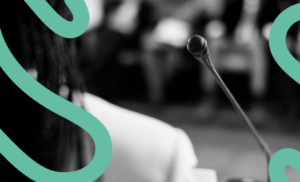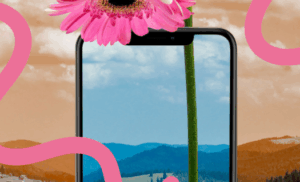The pandemic has changed our consumption habits: from the shopping cart to the use of social networks. The confinement and restrictions forced us to change the way we relate to others. We relied heavily on screens to access the outside world, from which we were isolated. There was no other possibility. Telecommuting, classes via Zoom or Teams, video calls via Skype, online games, podcasts… Even Netflix gave us the chance to watch movies live with friends while we discussed them on the spot. It was a forced digital acceleration that is now prooven with figures.
The pandemic made us stick to social media to inform, entertain, and learn. Smaller, closer and more homogeneous social groups arose. “Something closer than a community. Something similar to a tribe”, as defined by the consultancy Prodigioso Volcán, in its study Trends in social networks for 2021.
The pandemic has led to the emergence of smaller, closer and more homogeneous social groups
‘Coronavirus’ and ‘time’ were some of the most frequent searches on Google during 2020 in Spain. It is clear evidence that the pandemic plays an important role in the behavior of Spaniards in the online environment. Behavior that continues to adapt to new technologies and needs that this bizarre year has left us. Confirmed by the Digital 2021 Spain report, carried out by We Are Social and Hootsuite.
8 million new users in RRSS in Spain
According to the study, fewer and fewer people resist using social networks. In 2020, 8.1 million new users were added, representing 80% of the Spanish population active in social networks. In fact, 9 out of 10 people claim to be connected to the internet on a regular basis.
Last year, each Spaniard spent an average of 6 hours and 11 minutes per day browsing the internet. Of these, about 2 hours were used in social networks. It was time for information, entertainment, work and, above all, keeping in touch with family, friends and relatives.
WhatsApp has ousted Facebook as the most used social network in Spain
What apps do we spend time on? WhatsApp is the leading platform in Spain, being used daily by 89.5% of users. Followed by YouTube (89.3%), Facebook (79.2%) and Instagram (69%). However, in the global context, WhatsApp is relegated to third position, behind Facebook. This remains the most used social network in the world, with 2.74 billion users, followed by YouTube, with 2.291 million.
The most consumed content on the internet is still video. 94% of Spaniards claim to watch videos online and 72% choose to watch streaming television. During the confinement, the consumption of content on platforms such as Netflix or HBO became the center of our entertainment. In 2020, about a third of all consumption was done through streaming platforms. In ten years, it is estimated that it will exceed 80%.
TikTok has been the most downloaded application of 2020 and the tenth most consumed in Spain
TikTok has been the most downloaded application of 2020 in Spain, becoming the tenth most consumed social network of the year, especially among adolescents. Nanovideos dramatically increased their views during confinement. Such was the boom that Instagram decided to implement a similar content strategy with the so-called ‘Reels’.
The Twitch live streaming platform garnered an average of 17.5 million users per day, breaking its record in March 2020 by reaching a peak of 22.7 million active users. 65% of its users are men and 73% are between 16 and 34 years old. In fact, the New year’s broadcast, presented by Ibai Llanos, brought together more than 500,000 viewers on its channel, surpassing the audience of several television channels.
Other applications such as Clubhouse or Discord have also been very successful in recent months. The latter had more than 140 million active users at the end of 2020, double the number of the previous year.
New brand-client communication
Social networks increasingly cover a larger part of our daily routine and, in turn, due to the saturation of content, we are also more demanding with what we consume. These new digital trends cause a change in the digital paradigm and require a change in the way of communication between brands and customers.
As a society we have quickly adapted to a new environment defined by COVID-19. Consumer habits have changed and brands must be able to adapt and offer quick responses to these new needs.
In the new normality, will we maintain this digital behavior or, on the contrary, virtual exhaustion will make us return to the previous thing?










